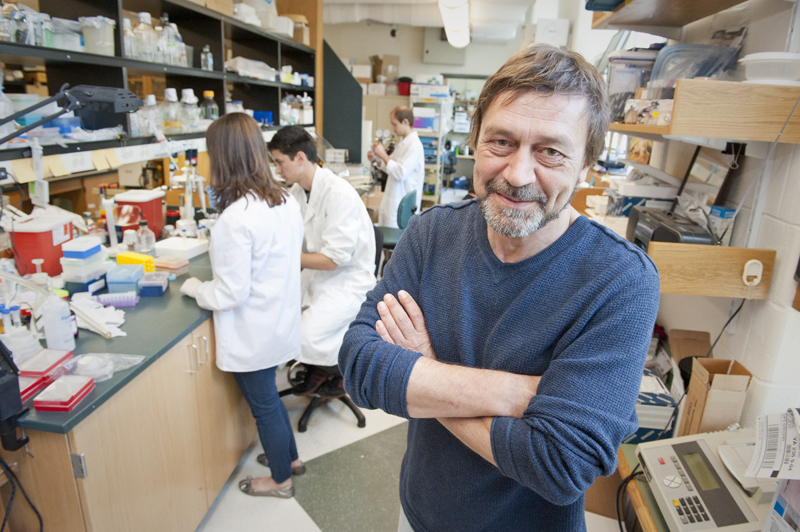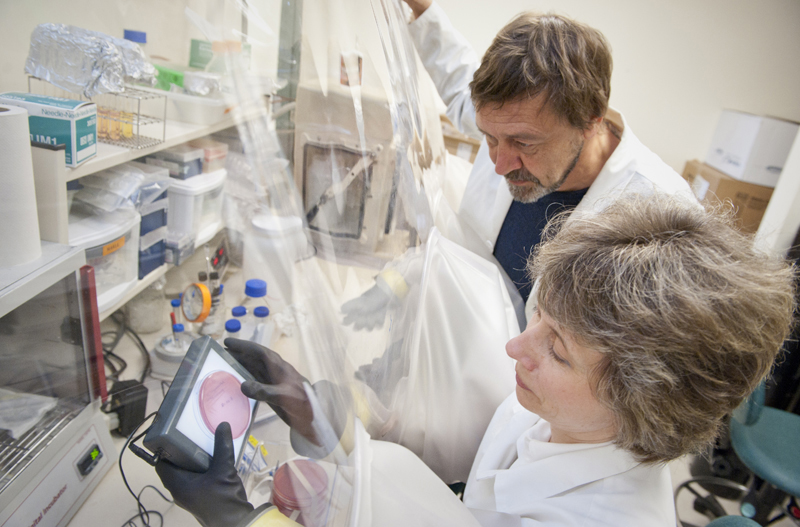Scouting for novel bacteria

Few things are so mysterious as bacteria. Indeed, the Great Plate Anomaly has baffled microbial biologists for more than a century: While millions of bacterial species populate the globe, only about one-tenth of a percent are cultivable in the lab.
The rest have long been considered “uncultivable,” but Northeastern biology professor Slava Epstein thinks otherwise.
In two papers released earlier this week in the journal Applied and Environmental Microbiology, Epstein proposes a new “scout model” as a solution to the Great Plate Anomaly. The model suggests that an evolutionary defense mechanism randomly drives individual bacteria into and out of dormancy. This creates a pool of inactive cells that do not grow and remain essentially invisible, and are thus ignored.
This “dark matter,” as Epstein calls it, is the bacterial insurance policy: Environmental or antibiotic challenges cannot kill dormant cells. A tiny fraction will randomly wake up into activity, unwittingly “scouting” the environment for the rest of the population. If conditions are challenging, these pioneers will die, to be replaced by a new generation of similarly awakening scouts. However, if conditions are good, they will grow, form a new population and may even send molecular invitations out for others to wake up and join the party.
“What I’m saying is many so-called ‘uncultivable’ species are perfectly cultivable, and there may be nothing unusual about them. It’s just that, number one, they are rare and, number two, the overwhelming majority of cells of any species in nature are dormant at any given time. They wake up randomly at low frequency.”

If Epstein is correct, then new cultivation methods and stronger efforts could open the door to an influx of novel species. Since bacteria bring with them molecules specialized in killing their neighbors, the scout model could also reopen the field of antibiotic discovery, which had its last breakthrough in the 1980s.
Epstein’s model questions the long-held assumption that microbial growth is time-dependent. That is, some species take longer to grow than others, and since typical lab cultures only last a short period, the longer-term bacteria never get a chance to grow.
Epstein’s lab hypothesized that if this were the case, then long-term cultivation should at first produce the bacteria that commonly grow in the lab, like E. coli, followed by more novel species later on. But when the team let a bacterial sample cultivate for a year and a half (one of the longest cultures ever performed), researchers found the same frequency of novel bacteria throughout the time period.
If the scout model is correct, then the probability of finding a novel species is the same regardless of incubation time: If a sample contains a million cells of one population and only 10 cells of another, then the chances of “capturing” an active scout out of the latter are minimal.
“You see?” he said. “Then the discovery of new species will be a random event. It will be a game of numbers.”





